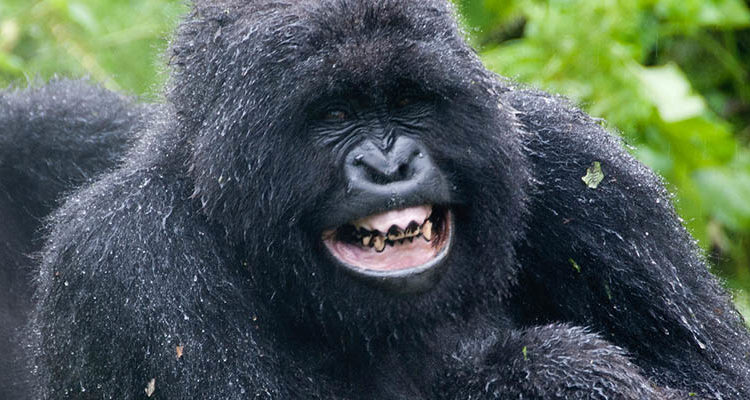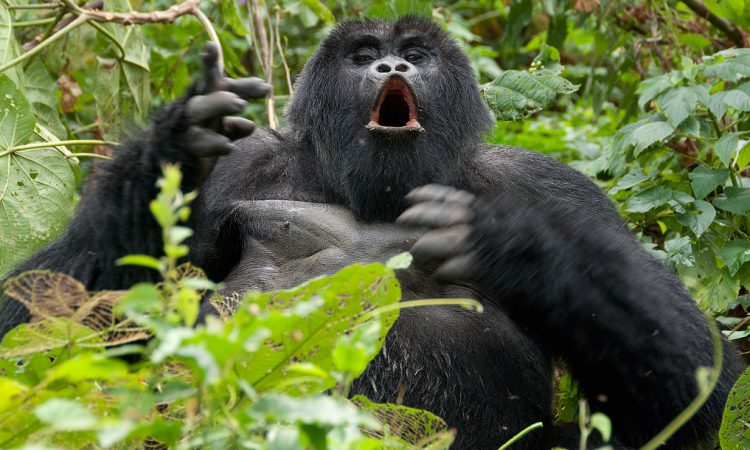
Ecology of Mountain Gorillas
Ecology Of Mountain Gorillas : There are bout 700 mountain gorillas left in the world which are shared between only in Uganda, Rwanda, DRC. Bwindi has about 60% of these gorillas.
These animals live in families live just like humans with one animal the male called a silverback being the head. Habituating these gorillas to suit being visited by humans take about two years.
Male gorillas are usually two times the size of the females and weigh about 350-500 pounds. The males have silver backs that were they get the name of silverbacks. The mountain gorillas are dark with long hair compared to the lowland gorillas that a brownish-grey. They live up to about 50 years.
These mountain gorillas are herbivores and eat plants. The plants they eat grow in moist climate that’s why we find then in the hills of Virungas.
The gorillas move in search of food and can move long distances especially during the scarce times. An adult gorillas eats about 60 pounds of vegetation everyday.

Gorillas are affectionate and gentle despite being powerful and strong. They live in groups of 2 to 30 members. The gorillas mate throughout the year. Female gorillas give birth at around 12 years and have a maximum of 6 young ones in their entire life time.
Mountain gorillas live in east-central Africa in just two isolated groups – one in the Virunga Volcanoes (a region spanning 3 national parks in Uganda, Rwanda and Democratic Republic of Congo (DRC)) and one in Bwindi Impenetrable National Park, Uganda.
When male young at the age 11 move away from their original group and move with other females for about a year before they form their own group and start breeding.
A mother gorillas take care of the babies for about four years as the silverback takes care of the orphans and the weaning.


